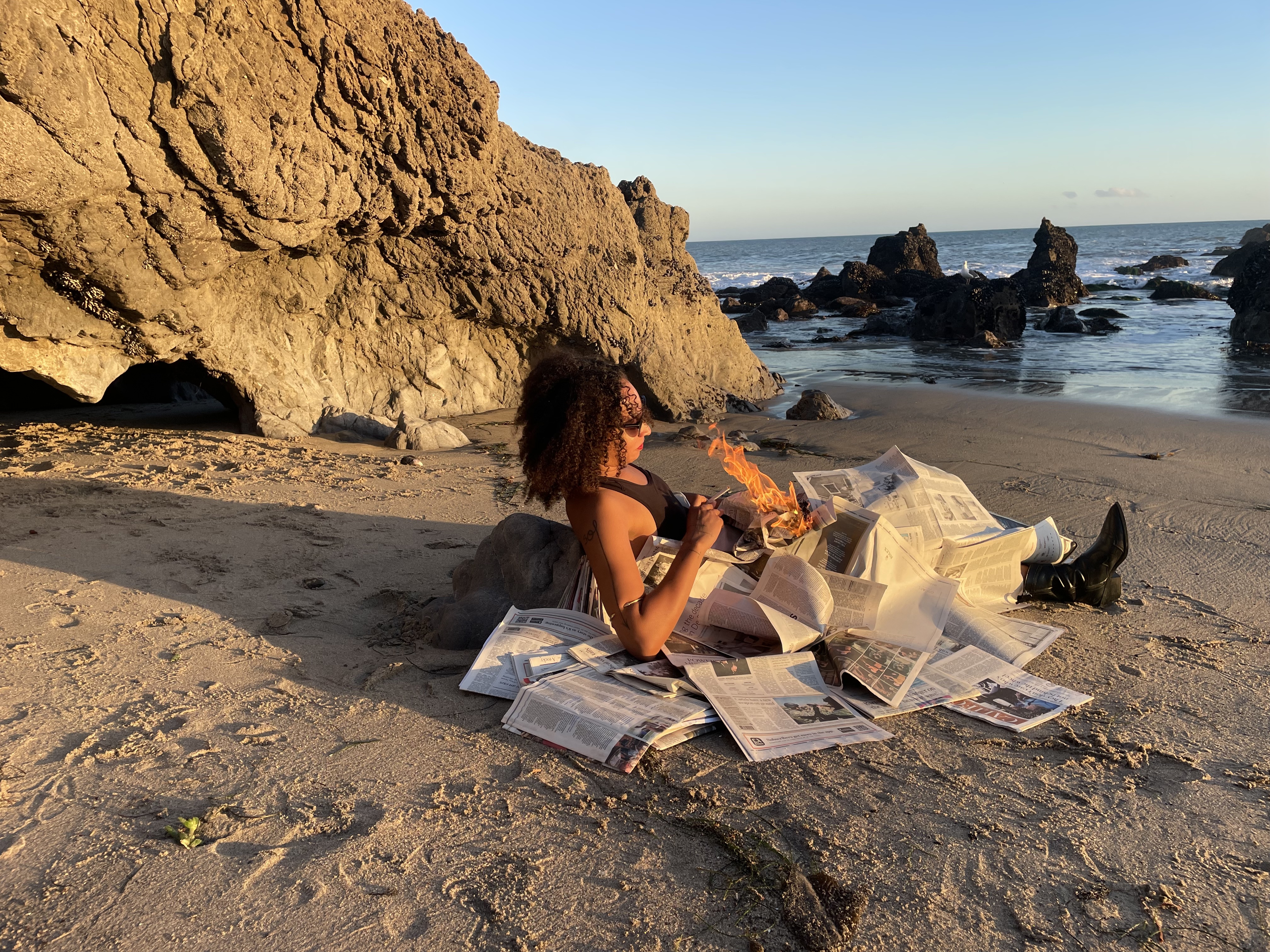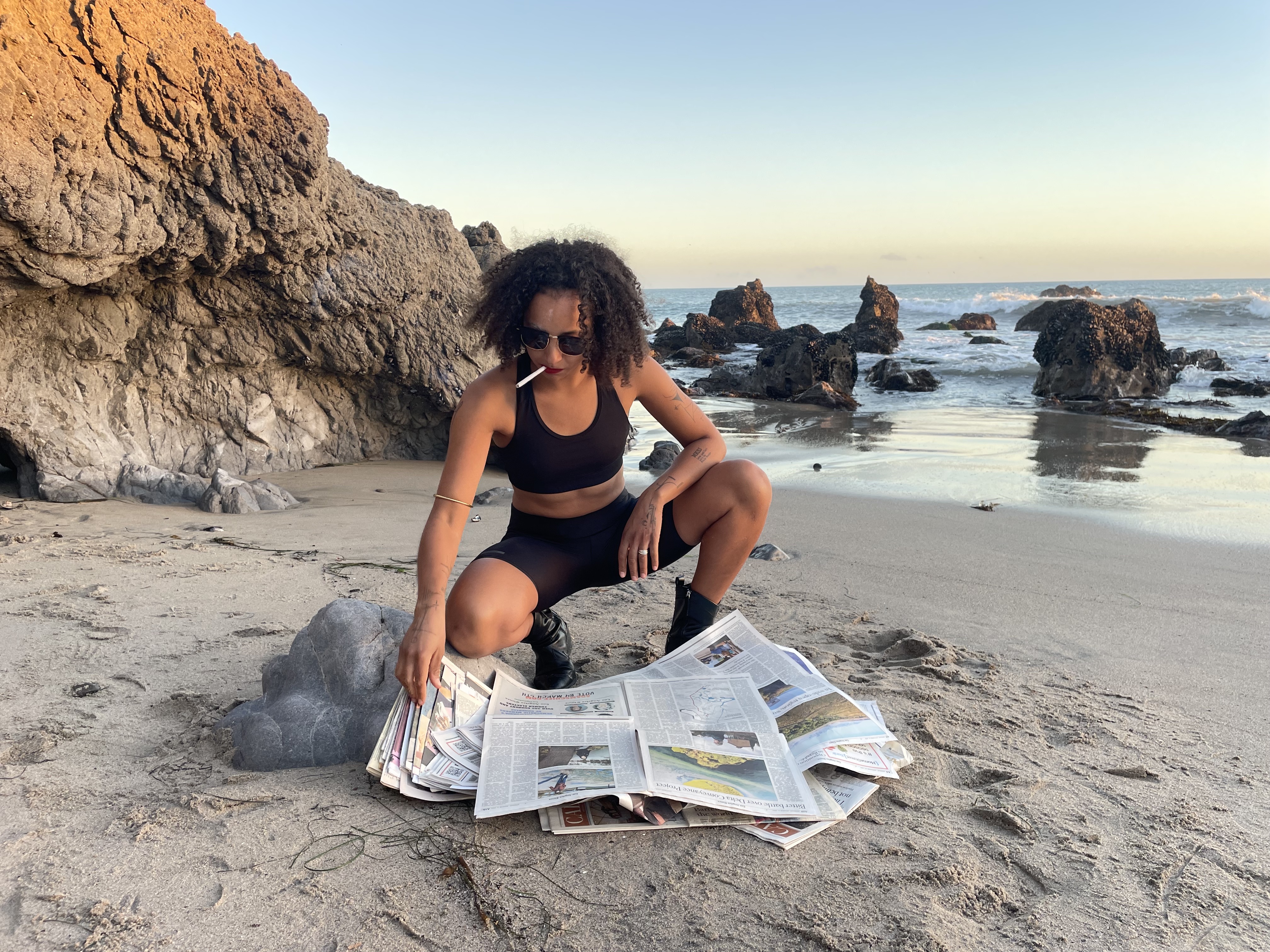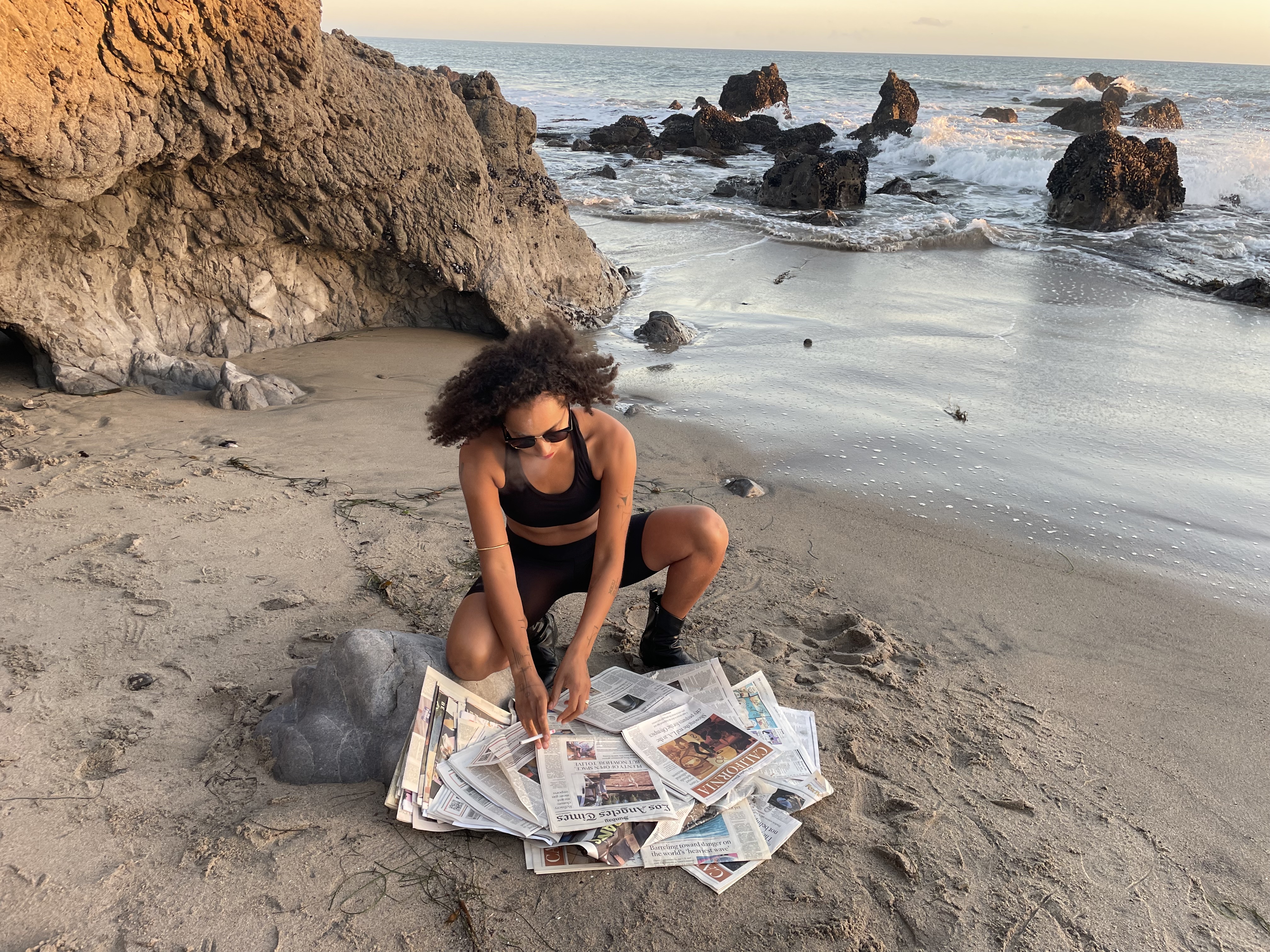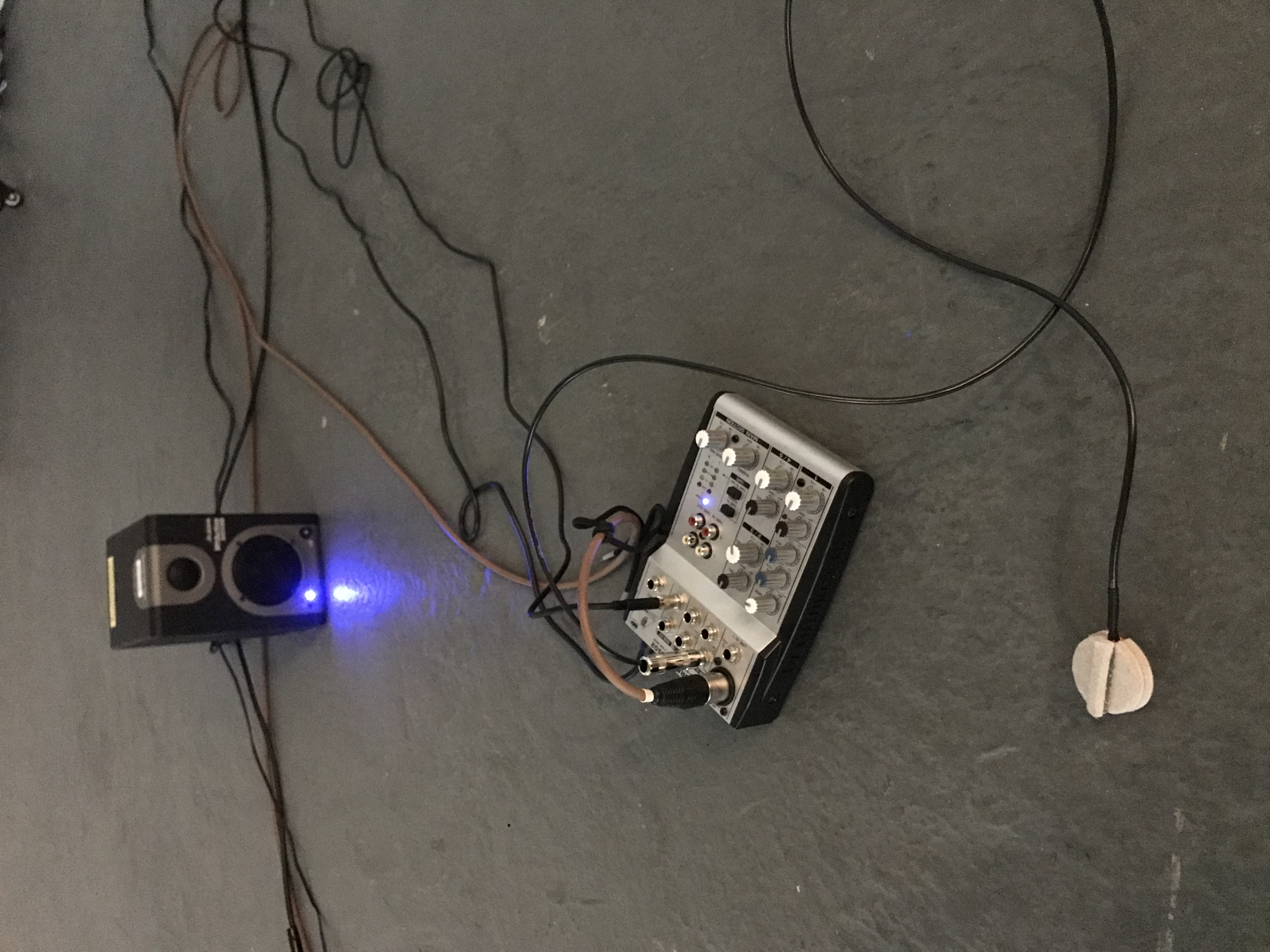TIME FOR REVOLUTION
TIME FOR REVOLUTION


TIME FOR REVOLUTION
As a spectator who can’t take any more of the news—each story worse than the next,
As an activist tired of seeing that nothing can be resolved by talking to institutions,
As a human being fed up with sterile communications that bring no action for those affected,
As a social being who, despite herself, belongs to capitalist society, feeling powerless, as if her voice— even when shouting at demonstrations— is never heard...
It’s as if the body must become the battleground for my struggles, because a body—dead or alive—seems to say more than voices or words that sink into oblivion.
With my own body, I want to shout my indignation at a humanity that learns nothing from its past mistakes. We are stuck in a perpetual cycle, as our old friend Plato might say, and it’s time to break this circle.
I’ve been waiting for the Messiah, but now that they’re clearly not coming, it’s up to us to come together and fight for an end to the desperate agony of a humanism that no longer resonates beyond borders.
If the words and images shared across all our fabulous social networks don’t make the elites—who clearly have the power to resolve poverty, social, and medical injustices—react, then let’s take up arms, WE ARTISTS, and burn all these arid, endless talks.
Without artists to tell the story, the world will remain a barren wasteland, where only aimless, detached capitalism will grow, serving merely to exchange a currency that doesn't actually exist if we stop using it.
The only real currency that exists is our exchange—from being to being, from idea to idea, from image to image.
That’s what history will remember.
!! Happy burning year of 2025 !!
Performance written by Sarah Konté
Directing and Shooting by Meredith Marlay





Ru Da Dé
03/22 - 04/22
Los Angeles, CalArts








“Ru Da Dé” means "escaped" in Pular.
From this translation, a visual and sound installation
visual and sound installation was set up.
By entering this space under the light of a half-blinding
of a half-blinding spotlight, the visitor is framed by photographic prints on the two side walls of the exhibition room.
On his right, a particular spotlight illuminates a portrait,
of Jae, who seems to be dodging the lens and
dismayed at having been captured in a photograph.
"Ru Da Dé" is then understood as
"dodging a conversation", to stop an attempt at
of communication:
instead of confronting a discourse, it is then a question of turning away from it by subtle means, to avoid confronting the subject of the conversation.
To divert the word of the discourse, to twist the direction which it can and thus play with the language. To make it dance then to find oneself in a whirling waltz, in a plurality of probabilities of possible meanings.
The device of the installation is then compose of speakers, a microphone and a recorder
microphone and a recorder placed beside the microphone, thus keeping a sound trace of the voices navigating in the space.
A succession of very short videos are represented in different formats such as monitors, a digital monitor, video-projectors, a TV screen and a projection screen, witnesses the of an over representation of technological forms.
Within this real Playground, the visitor is then invited to compose in this surplus of images and sounds.
Indeed, they are invited to change the
timeline by unplugging a sound and then choosing another sound, their create their own direction of meaning of the installation.
From this translation, a visual and sound installation
visual and sound installation was set up.
By entering this space under the light of a half-blinding
of a half-blinding spotlight, the visitor is framed by photographic prints on the two side walls of the exhibition room.
On his right, a particular spotlight illuminates a portrait,
of Jae, who seems to be dodging the lens and
dismayed at having been captured in a photograph.
"Ru Da Dé" is then understood as
"dodging a conversation", to stop an attempt at
of communication:
instead of confronting a discourse, it is then a question of turning away from it by subtle means, to avoid confronting the subject of the conversation.
To divert the word of the discourse, to twist the direction which it can and thus play with the language. To make it dance then to find oneself in a whirling waltz, in a plurality of probabilities of possible meanings.
The device of the installation is then compose of speakers, a microphone and a recorder
microphone and a recorder placed beside the microphone, thus keeping a sound trace of the voices navigating in the space.
A succession of very short videos are represented in different formats such as monitors, a digital monitor, video-projectors, a TV screen and a projection screen, witnesses the of an over representation of technological forms.
Within this real Playground, the visitor is then invited to compose in this surplus of images and sounds.
Indeed, they are invited to change the
timeline by unplugging a sound and then choosing another sound, their create their own direction of meaning of the installation.
A sound surprise distinguishes itself nevertheless from the crown, that of the voice of Jae at the wheel of a car in a tunnel in Los Angeles telling us
"Damned man, that was jam, that music was
cool!"
as a metaphor for the resonanc of the space music created by the audience.
Alternation between the videos, dead times
of black screens, moments when we wonder if the video will whether the video will resume or not, leaving on the screen of the TV a possibility to let the other images of the other videos.
The projection of the Disco Ball video is then enthroned
behind the microphone as the lighthouse of the
of the exhibition, the temporal guardian, the only
video which draws a rotation in a constant rhythm in front of the frantic rhythms of the other videos and the sounds that seek to be heard or to which must tend their ears and move within the crown to find the right listening angle in stereo.
The installation is also permanently filmed
to collect the different versions of reading played by the audience.
A new cinematographic writing of an installation in the heart of its process is outlined between the characters of the videos and the characters that become the visitors.
The limit of the screen is then broken, the
representation of an idea and the border
between what we see and what we want to see are then called into question.
Thus different levels of readings are in a space where the visitor is then the own storyteller of the history
that their want to tell.
"Damned man, that was jam, that music was
cool!"
as a metaphor for the resonanc of the space music created by the audience.
Alternation between the videos, dead times
of black screens, moments when we wonder if the video will whether the video will resume or not, leaving on the screen of the TV a possibility to let the other images of the other videos.
The projection of the Disco Ball video is then enthroned
behind the microphone as the lighthouse of the
of the exhibition, the temporal guardian, the only
video which draws a rotation in a constant rhythm in front of the frantic rhythms of the other videos and the sounds that seek to be heard or to which must tend their ears and move within the crown to find the right listening angle in stereo.
The installation is also permanently filmed
to collect the different versions of reading played by the audience.
A new cinematographic writing of an installation in the heart of its process is outlined between the characters of the videos and the characters that become the visitors.
The limit of the screen is then broken, the
representation of an idea and the border
between what we see and what we want to see are then called into question.
Thus different levels of readings are in a space where the visitor is then the own storyteller of the history
that their want to tell.